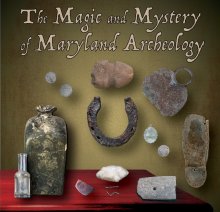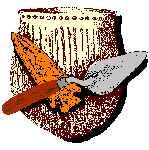As early as the 1300s, the English had a custom of bending a coin— usually in thirds folded over the center— as a vow to a saint in times of crisis. The coin bender was then obliged to carry the coin on a pilgrimage and leave it at a shrine to the saint. That may be how a 1596 silver sixpence with two worn fold lines came to be at the Patuxent River Naval Air Station’s Webster Field Annex (Figure 1). It was surface collected at a ca. 1637-1750 Jesuit plantation site that may have been the best pilgrimage destination a Maryland colonist could find after anti-Catholic legislation closed the chapel at St. Mary’s City in 1704.
Silver coins, especially those with crosses on them, have also been used as amulets that protected dairies against the effects of witchcraft. Witches were often blamed when dairy cows failed to produce milk or cream would not churn into butter, so people buried silver coins in the corners of dairies for protection or kept a silver sixpence on hand to place in or under the churn as needed. Silver coins were also recommended for use as ammunition to shoot at hares suspected of being witches in disguise.
|
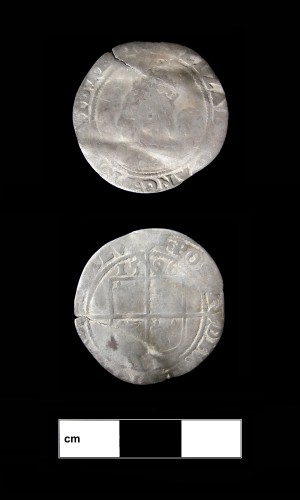
Courtesy
Naval Air Station
Patuxent River Webster
Field Annex, Naval
District Washington.
|
At the 2018 Archeological Society of Maryland field session at the Calverton site (18CV22), a silver James I shilling (minted 1603-1604) was found on the edge of a posthole for the probable doorway of a 17th-century post-in-ground structure. Similarly, half of a French silver five sols coin, minted from 1702-1704 and exhibiting two worn fold lines, was found deep in a post feature at the entrance to a storehouse cellar at the ca. 1711-1754 Smith’s St. Leonard plantation (18CV91). The placement of these coins at entryways points to their use as protective amulets designed to keep witches or other evil forces out.
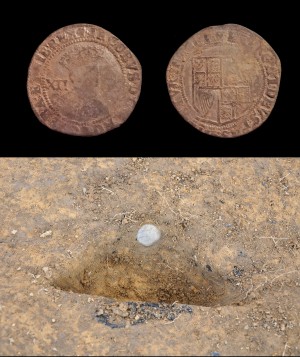 |
 |
Smith’s St. Leonard also yielded a pierced silver two pence coin dating to the English Commonwealth (1649-1660). This coin was recovered in the plowzone over the chimney hearth; an area often seen as vulnerable to invasion by evil forces like witches. A cellar by that same hearth yielded the only horseshoe found at the site, another object often used for protection and luck.
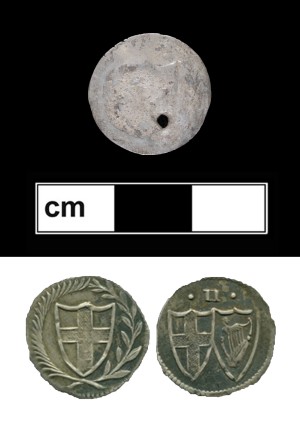 |
While fear of witches decreased during the 18th-century Enlightenment, the use of coins as lucky or protective charms continued. For example, sixpences were once included in the prescribed formula for good luck in weddings, “Something old, something new, something borrowed, something blue, and a silver sixpence in her shoe.”
Coin bending seems to have declined when thin hammered coins gave way to thicker milled coins, but coin alteration by piercing increased. Pierced coin charms are found on sites dating into the 19th and 20th centuries. Today people tend to relegate the idea of lucky coins to implausible superstition, but anyone who has picked up a “lucky” penny can testify that coin magic is still part of our culture.
|
Sara Rivers Cofield
Maryland Archaeologicl Conservation Laboratory
|

